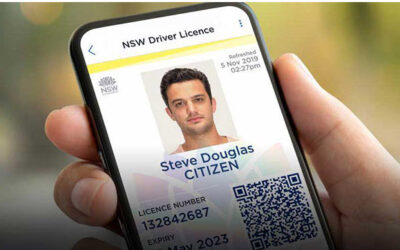Waiting times in doctor’s offices, emergency rooms, and hospital admissions has been an issue for patients and staff alike for decades. We have even set aside large areas in medical facilities specifically called “waiting rooms”!
Overall, this gives patients the impression, from the start, that they will be waiting for medical professionals to do their job, which is opaque to them. They have no way of knowing what is taking so long. Their frustration worsens due to the quickening pace of society and the everyday technology that people are familiar with using – from their phone to tablets and computers.
We’ve seen the way that electronic data management has affected logistics in everything from rapid parcel delivery, assembling machinery, and food service. Why isn’t that applied to medical operations?
Nobody wants patients to be treated like delivery boxes, but their data should be as portable and easily delivered as any other business communication. The first step is to capture patient data and put it in an electronic format that can be saved and accessed in databases. That is where Optical Character Recognition (OCR) software enters the picture.
Typically, most patient data is on identity cards, insurance cards, prior forms, medical records, and lab reports. All of this information is already on paper. So, this legacy data must be scanned in and matched to the patient. OCR software strategies improve patient intake efficiency to reduce waiting time and streamline office procedures.
Also, being able to scan paper documents such as intake forms and insurance paperwork into digital files during check-in allows instant reading and matching of these records. This process eliminates a lot of guesswork with patients and staff to match the correct data.
Front-End Data Capture Kick-starting the Process
The benefits of front-end data capture have been demonstrated, and many companies have moved to convert static (a.k.a. “dead”) paper invoices into interactive (a.k.a. “live”) data streams to increase efficiency in operations, management control and compliance with reporting requirements.
Capturing patient data at intake and digitizing it both shortens wait times and makes patient management more efficient. By using OCR Solution’s idMax OCR system, the time between receipt and the actual appointment shrinks by eliminating the time spent looking for the patients’ records to get them to the doctor.
Many patients know how these processes work in today’s business environment and are more impatient when they are not used. Using OCR and modern techniques, the patients are not only processed faster, but they see that you are using advanced methods.
Patient Record Management Speeds Up the Process
By using Optical Character Recognition (OCR) software through imaging tools for data capture, information from a variety of forms and documents can be scanned and the data collected and correlated.
Once digitized, the information from the forms goes into medical record databases and links to the patient record. As stated, by being able to search for, locate, and access these files digitally, a great deal of time is saved for the patient, doctor, and staff. This reduces the wait for the patient and saves time for the team. Also, it saves money for the practice or hospital with reduced labor.
These electronic documents are easily stored and accessed via a single computer, on the Cloud, or on integrated enterprise accounting database in multiple offices. This reduces the time the patient waits as their records are located, matched to their ID and insurance, and processed.
Balancing Supply and Demand
OCR and Data Capture solutions help end the manual processing and storage of paper. The added benefit, as noted, is that by digitizing the data, it can be put into databases where it can be accessed and manipulated with any number of software programs. This is where modern logistics management comes into play to shorten waiting times and reduce patient frustrations.
By balancing the “demand” of patients who need appointments with the available slots more efficiently, wait times are reduced. You can’t control when a patient is sick, but you can control when you schedule follow-ups or regular check-ups. By balancing the two, you eliminate heavy booking days by load leveling and bringing patients back at times and on days when demand is lower.
How does the implementation of OCR software help? Using captured data, the secondary visits for patients are noted electronically and put into the schedule. Thus, this ensures that such non-urgent appointments are adequately scheduled to level the load.
Practical Benefits
A happy patient is a healthy patient, and reducing the frustration of patients waiting for care is worthwhile. But, you should also think about the health of your staff. By giving them tools like OCR scanning and digital data management to work more efficiently and keep patients from becoming frustrated with wait times, you also increase the health and morale of your staff. This also improves the patient’s relationship with staff and the physician.
Thank you for reading our blog! How can we help you? Contact us today.




